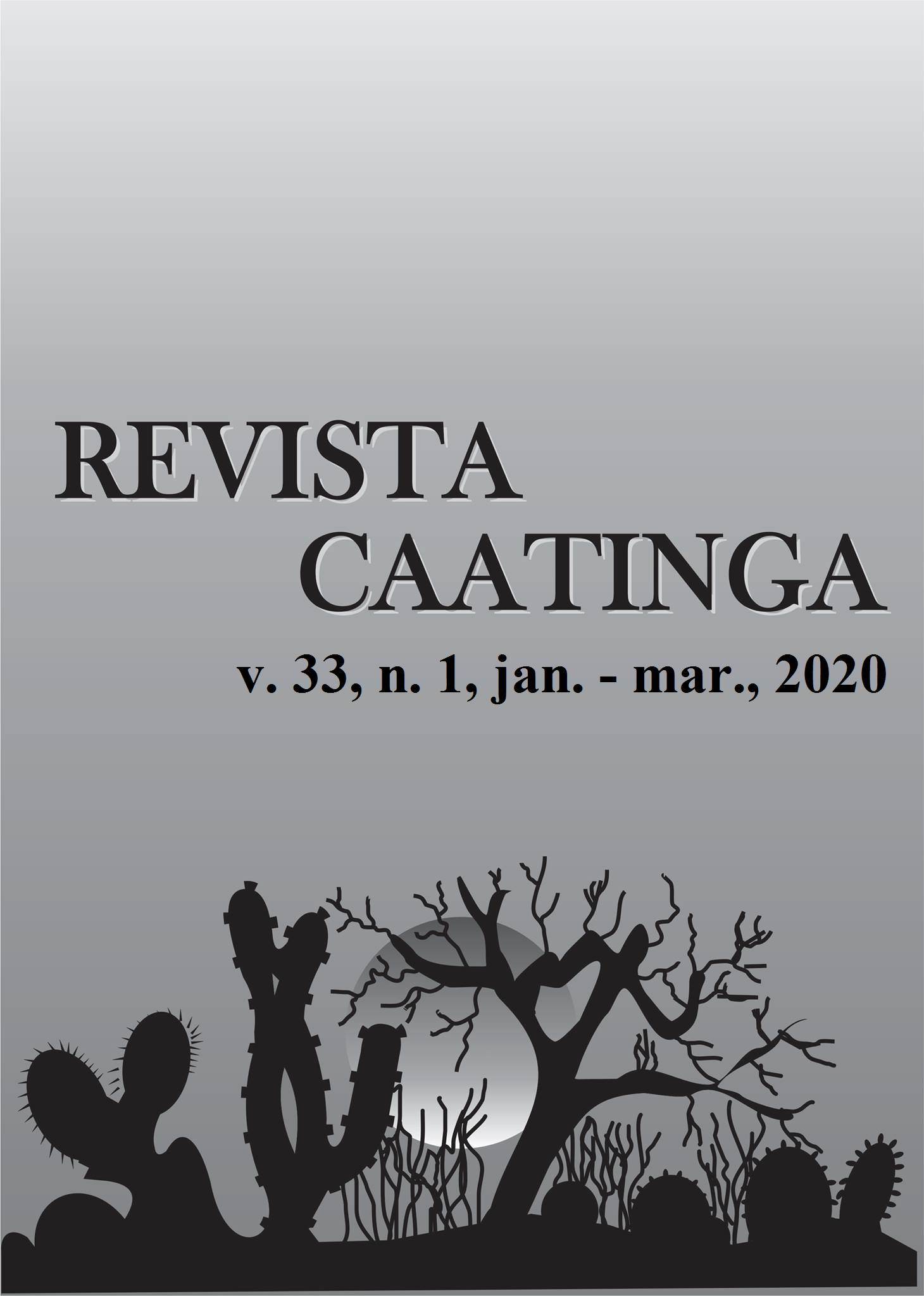ORIGEM PALINOLÓGICA, CONTEÚDO FENÓLICO E PROPRIEDADES ANTIOXIDANTES DE GEOPROPOLIS COLETADAS POR MANDAÇAIA (MELIPONA MANDACAIA) STINGLESS
DOI:
https://doi.org/10.1590/1983-21252020v33n126rcPalavras-chave:
Melipona mandacaia. Geoprópolis. Fenólicos. Antioxidante.Resumo
A abelha sem ferrão Melipona mandacaia (Smith 1863) (mandaçaia) é encontrada apenas na região da Caatinga, Nordeste do Brasil, nos estados da Bahia e Pernambuco, próximo ao rio São Francisco. O objetivo do presente trabalho foi determinar a origem botânica e avaliar o conteúdo fenólico e as propriedades antioxidantes (sistema β-caroteno / ácido linoléico, DPPH e sequestro do ABTS) da geopropolis da mandaçaia. Foram identificados 25 tipos polínicos de 15 famílias das 9 amostras de geoprópolis analisadas. O teor de compostos fenólicos variou entre todos os extratos etanólicos e as frações hexano, EtOAc e MeOH:H2O de geoprópolis. Os principais polens encontrados nas amostram de geopropolis foram da família Leguminoseae. Esta identificação de plantas utilizadas pelas meliponas indicam a importancia destas espécies vegetais como fontes de nectar e pólen. Nossos resultados revelaram que existe uma forte relação entre os compostos fenólicos e a atividade antioxidante. Estes resultados mostram que os fenóis totais da geoprópolis de mandaçaia foram responsáveis pela atividade antioxidante, com evidências de que é uma fonte rica de compostos bioativos fenólicos com potenciais benefícios a saúde.
Downloads
Referências
BANKOVA, V. S.; CASTRO, S. L.; MARCUCCI, M. C. Propolis: recent advances in chemistry and plant origin. Apidologie, 31: 3-15, 2000.
BARTH, O. M. Pollen analysis of Brazilian propolis. Grana. 37: 97-101, 1998.
BARTH, O. M.; LUZ, F. P. Palynological analysis of Brazilian geopropolis sediments. Grana, 42: 121-127, 2003.
CUNHA, M. G. et al. Antimicrobial and antiproliferative activities of stingless bee Melipona scutellaris geopropolis. BMC Complementary and Alternative Medicine, 13: 23, 2013.
DUTRA, R. P. et al. Phenolic acids, hydrolyzable tannins, and antioxidant activity of geopropolis from the stingless bee Melipona fasciculata Smith. Journal of Agricultural and Food Chemistry, 62: 2549-2557, 2014.
EMMONS, C. L.; PETERSON, D. M.; PAUL, G. L. Antioxidant capacity of oat (Avena sativa L.) extracts. 2. In vitro antioxidant activity and contents of phenolic and tocol antioxidants. Journal of Agricultural and Food Chemistry, 47: 4894-4898, 1999.
ERDTMAN, G. The acetolysis method-a revised description. Sven Bot Tidskr, 54: 516-564, 1960.
FRANCHIN, M. et al. Geopropolis from Melipona scutellaris decreases the mechanical inflammatory hypernociception by inhibiting the production of IL-1β and TNF-α. Journal of Ethnopharmacology, 143: 709-715, 2012.
MATOS, V. R.; ALENCAR, S. M.; SANTOS, F. A. R. Pollen types and levels of total phenolic compounds in propolis produced by Apis mellifera L.(Apidae) in an area of the Semiarid Region of Bahia, Brazil. Anais da Academia Brasileira de Ciências, 86: 407-418, 2014.
PRIOR, R. L.; WU, X.; SCHAICH, K. Standardized methods for the determination of antioxidant capacity and phenolics in foods and dietary supplements. Journal of agricultural and food chemistry, 53: 4290-4302, 2005.
RE, R. et al. Antioxidant activity applying an improved ABTS radical cation decolorization assay. Free radical biology and medicine, 26: 1231-1237, 1999.
SANTOS, F. A. R. Identificação botânica do pólen apícola. Magistra, 23: 5-9, 2011.
SILVA, T. M. S. et al. Chemical composition and free radical scavenging activity of pollen loads from stingless bee Melipona subnitida Ducke. Journal of food composition and analysis, 19: 507-511, 2006.
SLINKARD, K.; SINGLETON, V. L. Total phenol analysis: automation and comparison with manual methods. American journal of enology and viticulture, 28: 49-55, 1977.
SOUZA JUNIOR, U. P. et al. Geopropolis gel for the adjuvant treatment of candidiasis – formulation and in vitro release assay. Revista Brasileira de Farmacognosia, 29: 278-286, 2019.
SOUZA, S. A. et al. Characterisation of phenolic compounds by UPLC-QTOF-MS/MS of geopropolis from the stingless bee Melipona subnitida (jandaíra). Phytochemical Analysis. 29: 549-558, 2018.
SOUZA, S. A. et al. Composition and antioxidant activity of geopropolis collected by Melipona subnitida (Jandaíra) bees. Evidence-Based Complementary and Alternative Medicine, v. 2013, 2013.
TOMÁS-BARBERÁN, F. A. et al. Phytochemical evidence for the botanical origin of tropical propolis from Venezuela. Phytochemistry, 34: 191-196, 1993.
VELIKOVA, M. et al. Chemical composition and biological activity of propolis from Brazilian meliponinae. Zeitschrift für Naturforschung C, 55: 785-789, 2000.
Downloads
Publicado
Edição
Seção
Licença
Os Autores que publicam na Revista Caatinga concordam com os seguintes termos:
a) Os Autores mantêm os direitos autorais e concedem à revista o direito de primeira publicação, com o trabalho simultaneamente licenciado sob a Licença Creative Commons do tipo atribuição CC-BY, para todo o conteúdo do periódico, exceto onde estiver identificado, que permite o compartilhamento do trabalho com reconhecimento da autoria e publicação inicial nesta revista, sem fins comerciais.
b) Os Autores têm autorização para distribuição não-exclusiva da versão do trabalho publicada nesta revista (ex.: publicar em repositório institucional ou como capítulo de livro), com reconhecimento de autoria e publicação inicial nesta revista.
c) Os Autores têm permissão e são estimulados a publicar e distribuir seu trabalho online (ex.: em repositórios institucionais ou na sua página pessoal) a qualquer ponto antes ou durante o processo editorial, já que isso pode gerar alterações produtivas, bem como aumentar o impacto e a citação do trabalho publicado (Veja O Efeito do Acesso Livre).






